Self Publishing 
Small Business Breakthrough Workshop & Book Publishing as a Marketing Tool
(1)In October last year I was invited as a guest speaker to a Small Business seminar run by Business Coach, Sabrina Domenosky. At the seminar I presented the idea of writing and publishing a book as a marketing tool to help promote your small business and discussed the most effective ways to produce, market and sell your book. The response from the seminar was fantastic and I’m very pleased to say that Sabrina has invited me back to her next Small Business seminar on Sunday February 3rd to talk more about about Book Publishing as a Marketing Tool.

The Forgotten Sales Channel Part 2: Australia’s Top 3 Book Distribution options for Self-Publishers
In Part 1 of our discussion of book distribution options in Australia we examined why self-published authors should not limit their sales channels to a small number of online retailers at the expense of brick & mortar bookshops. Today we are going to dig deeper into the book distribution options in Australia and take a look at three of the leading book distributors that are worth partnering with.

The Forgotten Sales Channel Part 1 – Book distribution for self-publishers
As any regular reader of Digireado will know, it’s an exciting time to be an author. Yet, as the ranks of independent authors rapidly grow, very few self-publishers are bothering with brick and mortar bookshops anymore. It’s not difficult to see why—sales and distribution into bookstores has always been a notoriously difficult and costly task, while the closures of large chains and cherished independents alike have led to widespread speculation that high street bookselling is obsolete.

Self-publishing Part 9: Justifying the Humble Paragraph
Spare a thought for the humble paragraph, the unappreciated middle-child of book structure. While authors lavish attention upon each sentence and fuss over chapter headings and cliff-hangers, the paragraph is often just an afterthought—a bite-sized chunk of text defined by line breaks.

Great podcast episode from the Creative Penn for self-published authors
A lot of first time authors are opting to self-publish digitally rather than go through the traditional print process. In fact, the number of writers taking up the opportunity has created an entirely new market in self-publishing services, as I’ve often discussed. With so many people offering their opinions and recipes for success, it can be hard to sift out the good advice from the bad, but I wanted to highlight this particular podcast episode from The Creative Penn as a great example of GOOD ADVICE.

Self-publishing triples in 5 years
The growth in self-publishing over the last five years is well recognised but an analysis released yesterday by Bowker, has put a startling figure on that rise, indicating that the number of self-published books produced in the USA has grown 287% since 2006. The gross figures give a sense of the scale, with 235,625 self-published print and eBook titles released in 2011, including 148,424 print books and 87,201 eBooks. But dig deeper in Bowker’s Press Release and you’ll find some even more interesting stories.
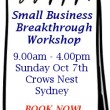
Marketing for Small Business 1-day Workshop + Using Books as a Marketing Tool
Business Coach, Sabrina Domenosky, has been attending a lot of writing workshops recently. She’s not planning a book of her own but many of her clients are, and they want to know how to write and publish a book that will enhance their business. By popular request, Sabrina is holding a one-day intensive small business seminar on October 7th in Sydney and she has invited me as a guest speaker to talk about Book Publishing as a Marketing Tool.
So, if you are in the Sydney area and would like to know more about book publishing in the context of growing your business, along with some hugely useful small business advice, then join Sabrina and me for a Small Business Breakthrough Workshop.
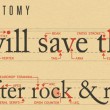
Self Publishing Part 8: The Wisdom of Fonts – 10 book typefaces that can’t go wrong
A typical book has between 25,000 and 100,000 words, which of course is the feature of the book that readers interact with the most, spending hours poring over it. But when was the last time you read a book and thought “Wow, that ending blew me away and the font choice of 11pt Baskerville Old Face was a masterful touch!”

Self Publishing Part 7: The Consonant Gardener – The Three C’s of Internal Book Formatting
Imagine your book with no headings, no paragraph breaks and no formatting – just one long line of text, sentence after sentence with no place for a reader to pause and gather their thoughts. The narrative has become a forbidding and impenetrable jungle of text. There are no reference points for a reader to navigate by and they will quickly tune out to your message.

Oracle Cards and Author Platforms – Hay House Writers’ Workshop 2012
I was invited to attend the Hay House Writer’s Workshop this week in Sydney and the phrase of the day was definitely author platform. In fact, if you assumed that a writing workshop run by the world’s leading Mind Body Spirit publisher would be filled with creativity exercises and meditations to help you write from the soul, you might have been disappointed.

Self Publishing Part 6: Six Tips for Getting Format and Layout Right First Time
It’s often the small things that pull readers out of a story and one of the biggest culprits is sloppy, inconsistent formatting. Formatting should be invisible in a book – the hidden scaffolding that allows the reader to smoothly step into the narrative and become immersed in the writing.

Self Publishing Part 5: The Fiscal Art of Book Design (or people judge books by their covers – work with it!)
The long-term success of any publishing venture will always hinge on the quality of the writing, but without great packaging you are severely handicapping your book’s ability to sell in almost any channel you can think of. We are conditioned as consumers to make inferences about the quality of a product by the aesthetic promise of its design and wrapping. It’s a psychological loophole that marketers have been exploiting with every increasing precision.

Self Publishing Part 4: Who’s really publishing your book? The changing face of Vanity Publishing
The confluence of digital technologies such as online retail, eBooks, print-on-demand (POD), desktop publishing and social media has dramatically shifted the balance of book publishing around the world by giving authors access to the tools they need to affordably publish and market their books globally. These same technologies have also led to a virtual renaissance in vanity publishing by opening up more legitimate business models for what was once a marginalised (and sometimes fraudulent) backwater of the industry.
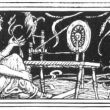
Self Publishing Part 3: Spinning Straw into Gold – The Magic of Editing
OK, so I recycled a throwaway metaphor from yesterday’s article in the title of this post but let’s not get too carried away extending it into any broader literary allusion – a professional editor can do wonderful things for your book but very rarely do they ask for a first-born son in return for their services. In fact, when you consider that your editor will most likely be the single most important contributor to your book (after yourself of course), the rates that they charge are extremely reasonable.
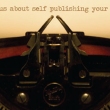
Self Publishing Part 2: Every great author needs a great publisher
In my previous post I laid out my checklist for self published authors and top of the list was the quality of the writing. By publishing a book you are creating a product that must stand on its own in one of the most competitive markets on Earth. There are literally millions of books published in various formats around the world each year and if you hope to convince discerning readers to pay money for your work then you must make sure that the content of your book is up to a commercially acceptable standard*. A startling number of self published books are doomed to failure simply by virtue of going to print before they are ready and, no matter how good the salesman, if the product doesn’t meet expectations then it’s simply not going sell.
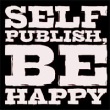
Self Publishing Part 1: For Fun or Profit?
There’s a huge amount of speculation around the decline of traditional publishing now that digital printing, online retail, eBooks and digital marketing are allowing authors more opportunity to go it alone. While the fate of traditional publishing is a topic for another day, the fact is that more and more authors are now deciding to… Read More ›
